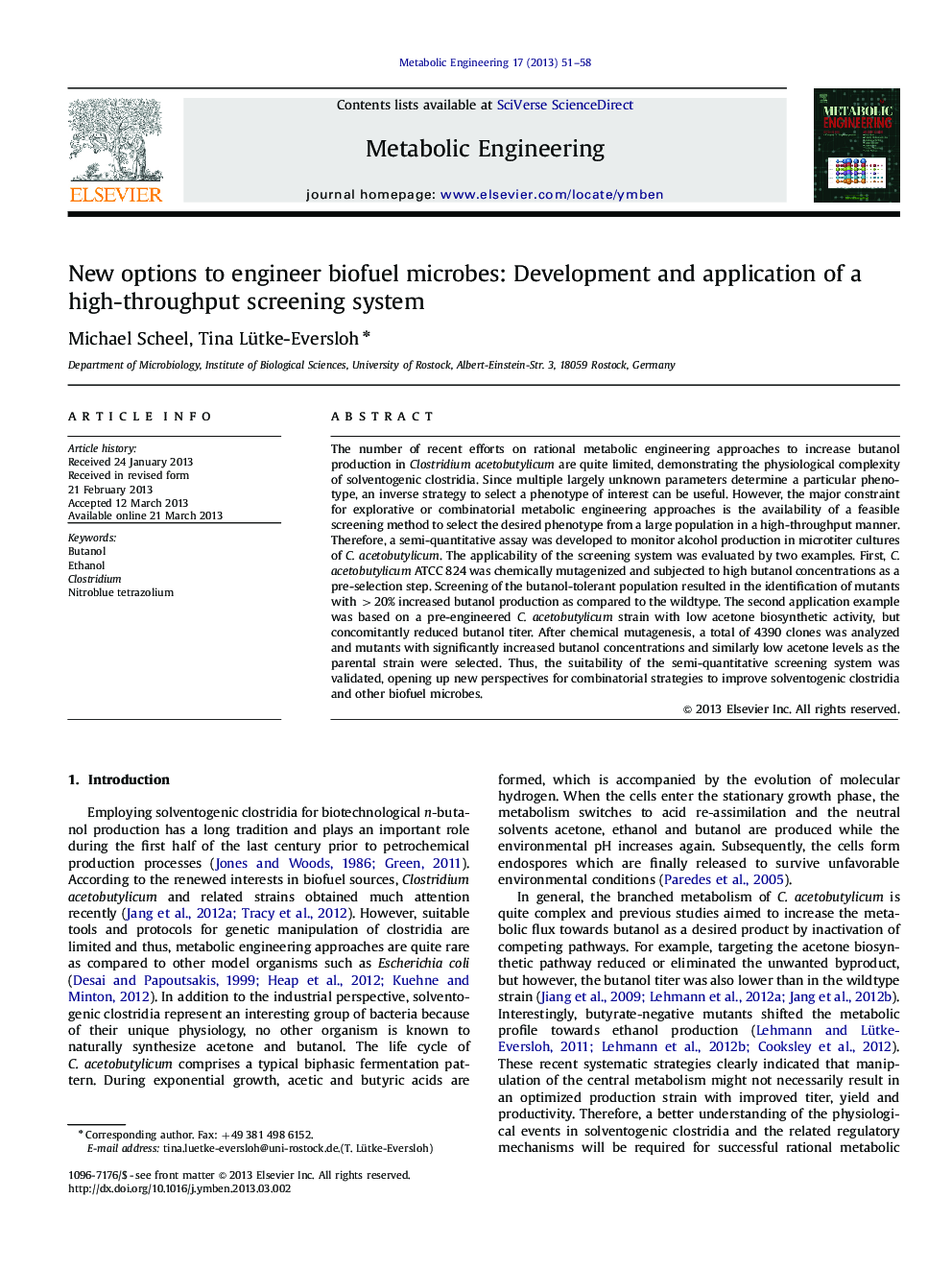| Article ID | Journal | Published Year | Pages | File Type |
|---|---|---|---|---|
| 6494751 | Metabolic Engineering | 2013 | 8 Pages |
Abstract
The number of recent efforts on rational metabolic engineering approaches to increase butanol production in Clostridium acetobutylicum are quite limited, demonstrating the physiological complexity of solventogenic clostridia. Since multiple largely unknown parameters determine a particular phenotype, an inverse strategy to select a phenotype of interest can be useful. However, the major constraint for explorative or combinatorial metabolic engineering approaches is the availability of a feasible screening method to select the desired phenotype from a large population in a high-throughput manner. Therefore, a semi-quantitative assay was developed to monitor alcohol production in microtiter cultures of C. acetobutylicum. The applicability of the screening system was evaluated by two examples. First, C. acetobutylicum ATCC 824 was chemically mutagenized and subjected to high butanol concentrations as a pre-selection step. Screening of the butanol-tolerant population resulted in the identification of mutants with >20% increased butanol production as compared to the wildtype. The second application example was based on a pre-engineered C. acetobutylicum strain with low acetone biosynthetic activity, but concomitantly reduced butanol titer. After chemical mutagenesis, a total of 4390 clones was analyzed and mutants with significantly increased butanol concentrations and similarly low acetone levels as the parental strain were selected. Thus, the suitability of the semi-quantitative screening system was validated, opening up new perspectives for combinatorial strategies to improve solventogenic clostridia and other biofuel microbes.
Related Topics
Physical Sciences and Engineering
Chemical Engineering
Bioengineering
Authors
Michael Scheel, Tina Lütke-Eversloh,
